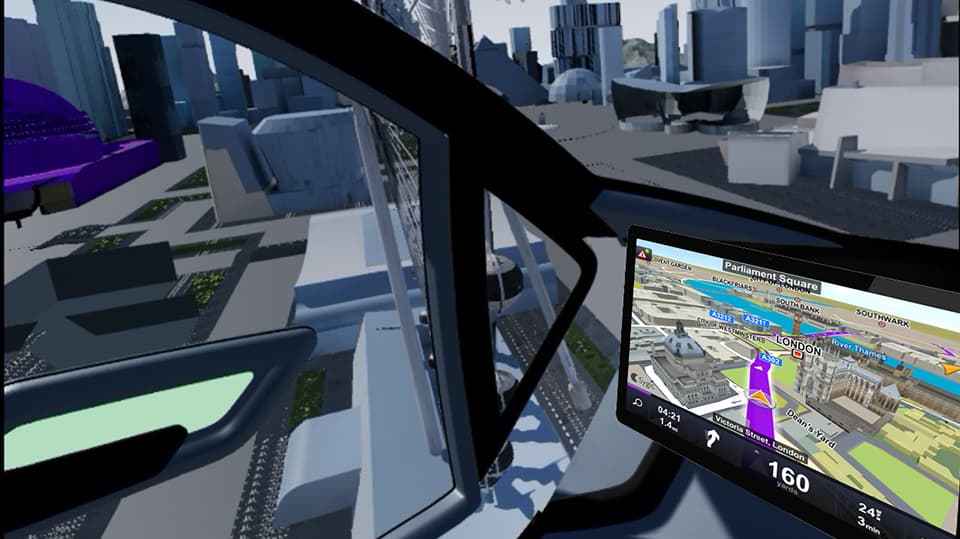AVRRC XR (AR, VR and MR) Facilities
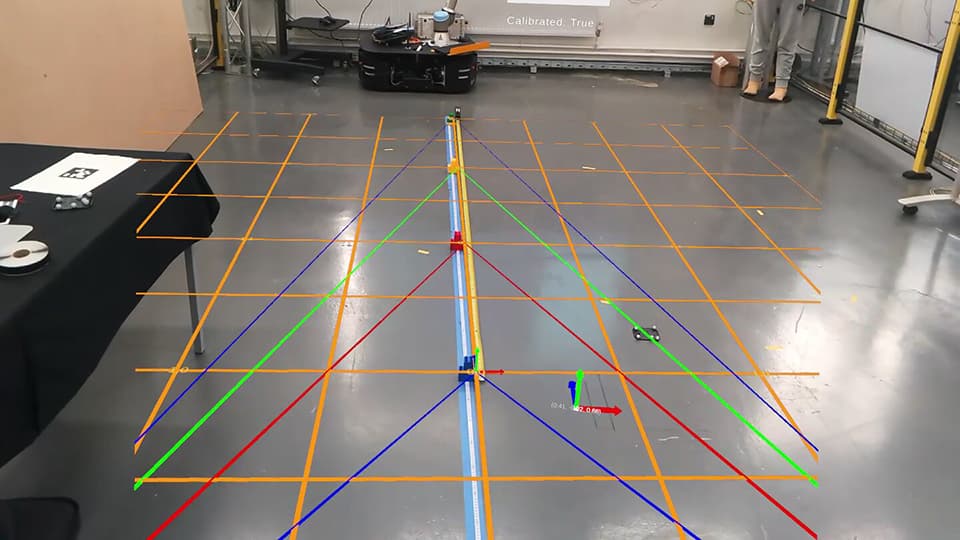
Performance evaluation of XR Technologies
XR (AR, VR and MR) Research
The AVRRC has been developing XR displays (spanning VR, AR and XR) for 30 years. This has involved laboratory development of XR technology, industrial/manufacturing applications of XR and airborne trials of AR systems in aircraft. The use of XR solutions to support training, maintenance, design and manufacturing has spanned the aerospace, automotive, healthcare and other sectors. Whilst some of the application principles are similar there are quite different requirements for deployment. Our research has involved development of new enabling technologies, human in the loop evaluations and deployment into operational scenarios.
We are working with state-of-the-art XR systems and suppliers which has provided access to next generation pre-production XR technologies. We do this so that we can provide unbiased feedback to XR developers so they can improve their product offerings.
Next generation XR display devices
The AVRRC are collaborating with DigiLens with the goal of developing the World’s best XR (augmented reality) display device that is suitable for industrial applications. The AVRRC’s extensive track record of developing XR hardware/software and associated human factors for over 30 years makes it uniquely qualified to support development of this kind. Currently, the DigiLens ARGO device is undergoing extensive performance testing within the AVRRC labs. The results will help future development of this exciting device for application to demanding industrial applications.
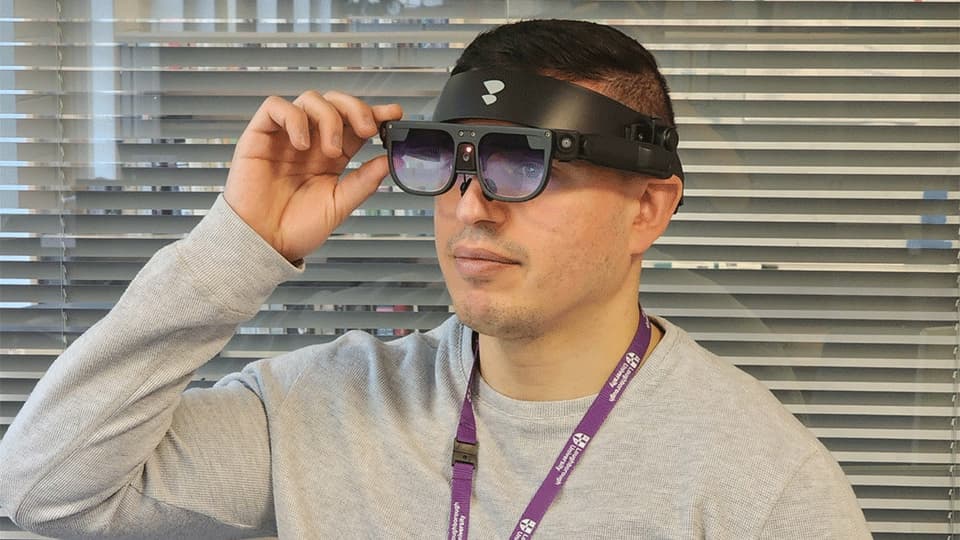
VR to Simulate New Concepts
The AVRRC have explored new concepts by bringing flight simulation technology together with next generation transport concepts. For example, a full flight simulator was created to test passenger concepts for future ‘flying taxis’. In this example the concept for a Flying Taxi by Ital Design was modelled in VR and allowed a human factors studies to be undertaken. Users were able to sit in the vehicle and experience what it would be like in a ‘real taxi’ around London – by wearing a non see through VR head mounted display to give detailed internal and external views.
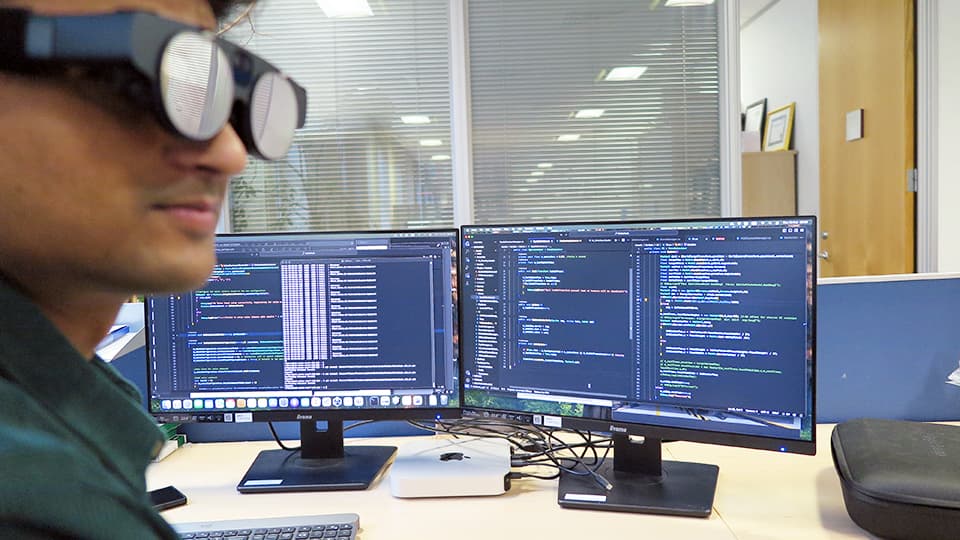
The AVRRC has deployed its XR capabilities to support novel applications to explore the associated human factors aspects. AR and VR applications have spanned support to the Police, Healthcare, telepresence, training, maintenance and many other areas.
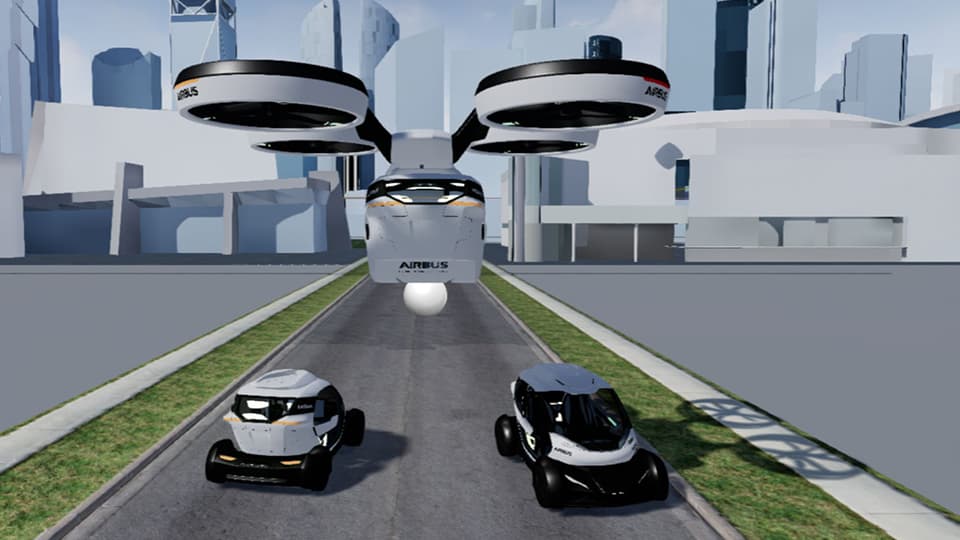
For example, the AVRRC have explored new transport concepts by bringing flight simulation technology together with augmented and virtual reality. The image above shows a full flight simulator that was created to test passenger concepts for future ‘flying taxis’. In this example the concept for a Flying Taxi by Ital Design was modelled in VR and allowed a human factors study to be undertaken. Users were able to sit in the vehicle and experience what it would be like flying in a ‘real taxi’ around London. By wearing a non-see through VR head mounted display to give detailed internal and external views (see figure below) it was possible to create semi-realistic experiences along with added visual effects to simulate minor turbulence and weather effects.
